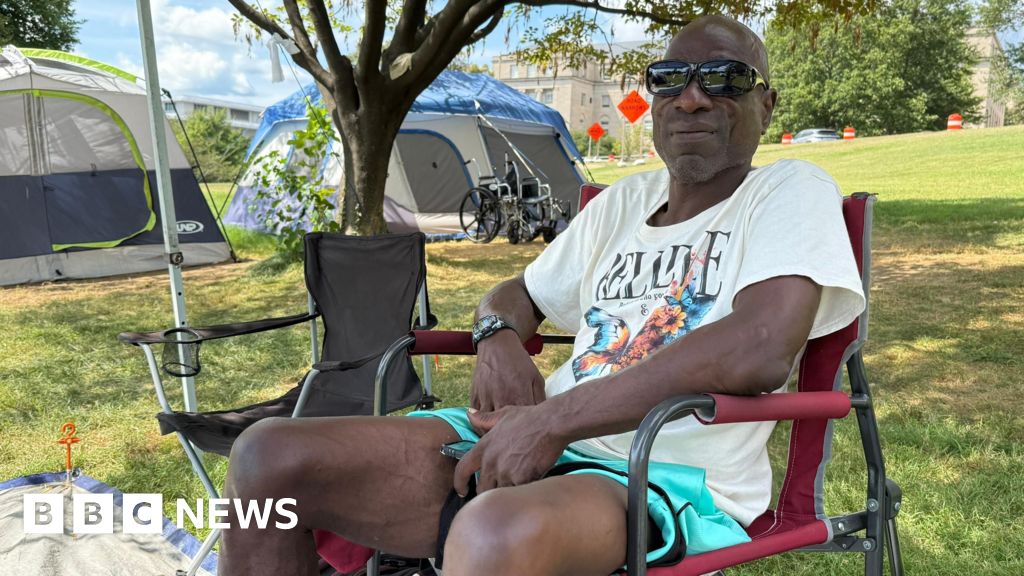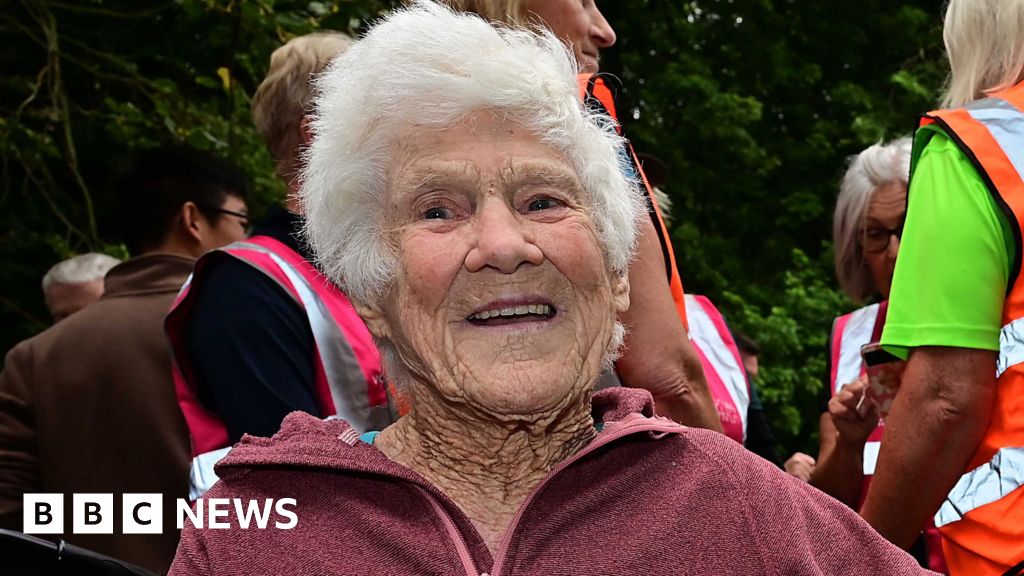- Pepfar funding has impacted South Africa’s HIV response, a global report has found.
- Testing and data information systems were disrupted, with viral load testing reportedly decreasing by up to 21% in March and April, UNAIDS has found.
- Healthcare experts have warned that the funding cuts could impact South Africa’s work to roll out further anti-retroviral treatment.
South Africa might be cushioned from the fallout brought about by reduced funding for HIV prevention and treatment, but it has not been spared the effects, a global health report has found.
The UNAIDS Global Aids Update 2025 found that the President’s Emergency Plan for AIDS Relief (Pepfar) funding losses have damaged vital parts of South Africa’s HIV response.
The South African government manages the world’s largest HIV treatment programme, with about 6 million of the 7.8 million people living with HIV receiving antiretroviral therapy last year. More than 80% of this programme is funded through the domestic tax base.
“Testing and data information systems were disrupted, with viral load testing reportedly decreasing by up to 21% in March and April 2025. Community-led organisations and other NGOs had to cease outreach and other vital activities serving key and other marginalised populations, along with the important tasks of bringing back into care people who had interrupted their treatment,” the report stated.
READ | HIV numbers at a 30-year low, but funding cuts could derail progress - UNAIDS report
In addition, community-led monitoring of HIV services was stopped, the purchase of long-acting injectable pre-exposure prophylaxis (PrEP) was frozen, clinical research was halted or put on hold, and HIV response staff were made redundant, the response said.
Following the withdrawal of Pepfar, the health sector fears that the loss of thousands of community healthcare workers, who have had their contracts terminated due to funding cuts, could set back South Africa’s antiretroviral therapy (ART) gains.
South Africa’s health department is working to identify and put an additional 1.1 million people living with HIV on ART by the end of December. Community-based healthcare workers, who are a vital tool in identifying people living with HIV and ensuring they access treatment, are an important part of this work, according to Professor Linda-Gail Bekker of the Desmond Tutu HIV Centre at the University of Cape Town.
Bekker estimated that at least 2 000 community outreach workers have lost their jobs.
“These community workers play the important role of tracking and tracing individuals who are lost to follow-up or who have cycled out of care. They are also counsellors who may be doing the HIV testing. They often mobilise individuals who are then encouraged to come in for prevention. They have, from the beginning, been doing a lot of work on HIV testing. They have been part of our response and have been very important for educating and supporting others, both on antiretrovirals and on prevention,” she said.
The director of the clinical trial unit at Wits University, Professor Ian Sanne, said that the number of people who lost their jobs after the funding cuts could be as high as 15 000. He estimates that around two-thirds of those who lost their jobs are community healthcare or outreach workers.
These people were an important tool in carrying out testing, identifying people living with HIV, and facilitating ART and other care, he said.
“We think the gap in terms of those who are undiagnosed or not in treatment is around 1.1 million people,” Sanne said.
The “95-95-95” target, which most countries, including South Africa, are working towards, has been set by UNAIDS and aims to end the Aids epidemic by 2030.
The target is that 95% of people living with HIV know their status, 95% of those who know their status receive ART, and 95% of those on ART achieve viral suppression.
During his budget vote speech on Wednesday, Health Minister Aaron Motsaoledi said South Africa had reached 96-79-94, in terms of the UNAIDS target, with 7.9 million people in South Africa who UNAIDS estimates to be HIV-positive. He added that around 5.9 million people were on ART.
Pepfar provided R7.9 billion in funding to South Africa. The country’s HIV programme is almost R47 billion, prompting Motsaoledi to insist that it is “inconceivable … the withdrawal of R7.9 billion by President Trump will collapse the entire programme”.
On Wednesday, the health minister announced that the National Treasury had agreed to make R750 million available to the country’s HIV response.
Of this funding, R590 million will be allocated to service delivery in provinces, R32 million will be allocated to support the Central Chronic Medicine Dispensing and Distribution (CCMDD) Programme, and R132 million will be transferred to the South African Medical Research Council (SAMRC) to support health researchers around the country.
He also announced the permanent employment of 27 000 community health workers who have been in the system for close to two decades but hired through NGOs. This will cost R1.4 billion, Motsoaledi said.
READ | SA researchers involved in breakthrough HIV treatment approved for use in the US
Bekker said that South Africa continued to fall short of the second 95% target: those who know their status receive sustained ART.
“We’re under 80% there. It does mean that we have work to do, particularly in keeping people in care, making sure they’re coming back for their antiretrovirals, and then making sure that they continue to take their antiretroviral treatment,” said Bekker.
Not only do community workers assist in identifying people living with HIV and assist them in accessing ART, but they also play an essential role in education and prevention, she said.
“Our community healthcare workers are really critical to our HIV response.”
“These folk often are the backbone of our programmes. They’re doing a lot of the legwork to keep people in care, to make sure that they’re coming back to tracking and tracing them, and to test new individuals for the programme.”
Pepfar projects targeted 26 districts, with the priority on testing, said Sanne. This included testing household members of a person who has recently tested positive for HIV, Sanne said, as well as vulnerable groups. They also played a role in prevention, through the distribution of PrEP and contraception, and education. Community healthcare workers are also usually the ones who follow up with patients who have not reported to their clinic for their regular treatment.
READ | ‘Good news story’: Unaids applauds South Africa’s leadership amid US funding cuts
Sanne said that to keep South Africa on track for the UNAIDS targets, the national health department would have to provide the shortfall left by the Pepfar funding cuts, as the role of the NGOs is unlikely to be funded.
Treatment Action Campaign’s Neliswa Nkwali said most of the organisations affected by the funding cuts and the resulting job losses work at a local level, with government facilities struggling to reach.
“The outreach workers could go into communities and carry out testing, which removes overcrowding at government facilities. In some facilities, people can wait five hours for a test, and that’s not even talking about consultation and treatment,” said Nkwali.
She said the long waiting time would deter some people from getting tested, and reducing the waiting time through community-based healthcare workers would enable them to reach those who might otherwise not be tested.
We’ve found that people don’t want to go to the clinic, but they will get tested with outreach programmes.
“Outreach is a bonus for the community. Aside from testing, it also helps with creating a demand for preventative measures such as PrEP. However, now, healthcare workers are no longer there, and people are starting to resist going to clinics. Six months down the line, we expect to see a high level of patients disengaging from care,” she said.
The funding cuts have the potential to derail the world’s gains in ending AIDS as a public health threat by 2030.
The number of people acquiring HIV and dying from AIDS-related causes was at its lowest level in more than three decades at the end of last year. Globally, an estimated 1.3 million people acquired HIV in 2024, 40% less than in 2010. An even steeper 56% decline in the number of new infections was achieved in sub-Saharan Africa, which is home to half of all people who acquired HIV globally in 2024.
According to the report, in South Africa, 7.8 million people were living with HIV in 2024. In the same year, 6.3 million people were accessing antiretroviral therapy, up from 1.4 million in 2010.
New HIV infections in South Africa have been reduced by 67% since the peak in 2000, but there were still 170 000 new infections in 2024. Aids-related deaths have been reduced by 81% since the peak in 2004 and by 65% since 2010. In 2024, around 53 000 people died from Aids-related illnesses.
“That was the situation at the end of 2024. Since then, HIV programmes in low- and middle-income countries have been rocked by a systemic shock, with sudden funding cuts and freezes putting hard-won progress in the response to HIV in jeopardy,” the report said.
READ | ‘We need to go back to the streets’: A new era of HIV activism
UNAIDS projections show that a permanent discontinuation of Pepfar support could lead to more than 4 million additional AIDS-related deaths and more than 6 million additional new HIV infections by 2030.
Pepfar supported HIV testing for 84.1 million people and HIV treatment for 20.6 million people.
 (1).png)
 1 month ago
14
1 month ago
14

















